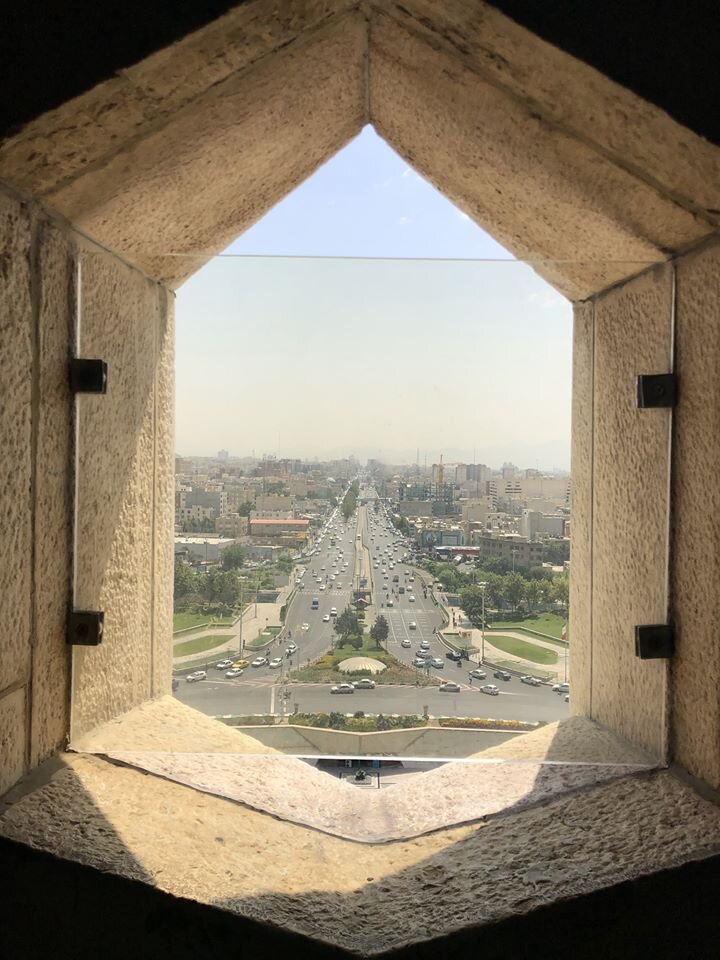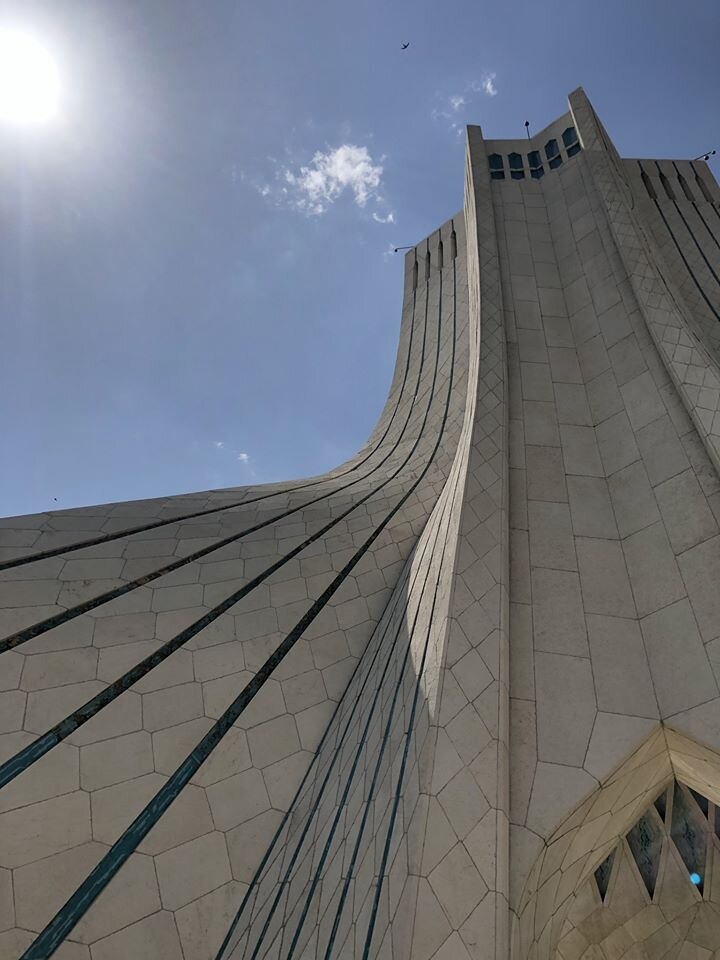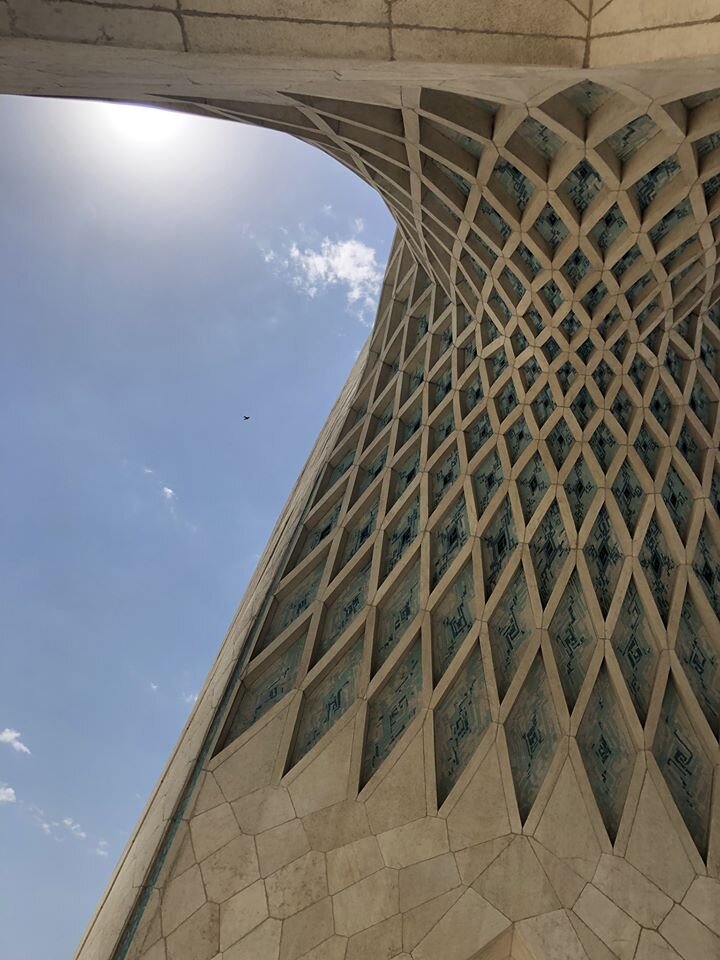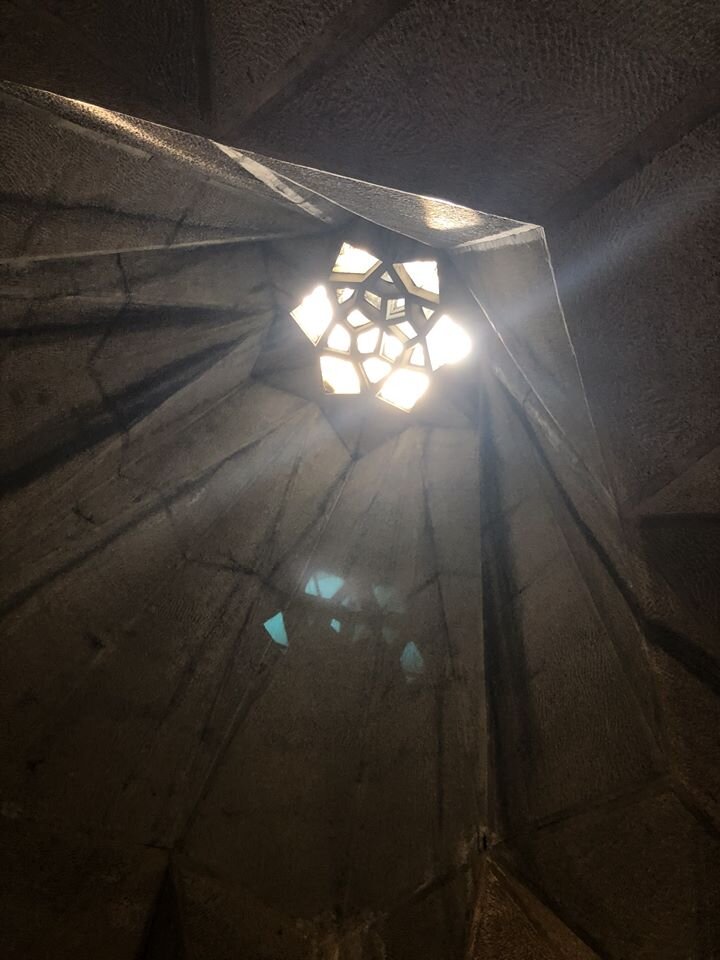Marked Targets
As many of you know, I am half-Iranian. Much of my family still resides in Iran and I am fortunate to be able to visit them every few years. I was born and will always be an American, but I hold Iran and it’s culture, my heritage, so dear to my heart. This past week, our President threatened 52 Iranian cultural sites, marking them as targets if the Iranian government retaliated against the assassination he’d ordered. Politics aside, these monuments are so important to the world’s history and hold so much meaning. I wrote a little bit about a couple of the places I visited on my last trip and why I think they are so important.
The Azadi Tower (Freedom Tower) is one of the landmarks of Tehran, Iran, marking the west entrance to the city. It was built in 1971 to mark the 2500th anniversary of the foundation of the state of Iran. It stands 148 feet tall and is made of beautiful white marble curated from the Isfahan province. There’s a campy little museum built into the ground underneath it, full of antique pottery, flags and historically significant artifacts from other countries, and local children’s art. The tower is absolutely stunning to see in person and the view of the entire city from the top makes the zillions of stairs you have to climb to get there entirely worth it.
Not only does this structure represent the gateway to Tehran, but it’s proximity to the domestic airport (Iran’s only airport at the time of its construction) makes it a symbol of welcome to those entering the country. For me, this monument is a symbol of comfort and clarity.
When 45 vaguely threatens areas of cultural significance, this is one of the places he’s talking about. Azadi Tower does not only belong to the Iranian people, but to anyone who is fortunate enough to travel there and be greeted by its magnificent grounding presence.
Takht-e Jamshid (Persepolis), just a short bus ride Northeast of Shiraz, Iran, was the capital of the Achaemenid Empire 550-330 BC. It was constructed under the reign of Cyrus the Great and Darius I and burnt down by Alexander the Great. It was excavated by French archaeologist, Andre Godard, in the early 1930’s. Persepolis was a massive castle with a grand double staircase at the entrance and more ornately adorned pillars than I could keep track of. The beautiful dark gray marble palace housed royals, nobles, soldiers, clerks, and laborers. The desert complex had also engineered within it an intricate underground water supply system. The Gate of Nations, ordered by Xerxes I, is my favorite part of Persepolis. Any visitors would have had to pass through this substantial doorway to enter, inscribed with good intentions and protection against evil; a symbol of welcome to all.
Persepolis is a UNESCO World Heritage Site, which means it is considered to be important to the collective and preservative interested of humanity. UNESCO sites are chosen because they have special cultural or physical significance, signify a remarkable accomplishment of humanity, or serve as evidence of our intellectual history on the planet. They are legally protected by International treaties. Iran has 22 cultural and 2 natural sites listed as UNESCO World Heritage sites. There are 56 properties on the tentative list.
When 45 smugly threatens areas of cultural significance, this is one of the places he’s talking about. Persepolis and its history may happen to be situated within the boundaries of Iran, but it does not only belong to the Iranian people. It belongs to humanity. To destroy it again would be a legitimate war crime and an affront to the human race.
“The Macedonians were ashamed that so renowned a city had been destroyed by their king in a drunken revel; therefore the act was taken as earnest, and they forced themselves to believe that it was right that it should be wiped out in exactly that manner.” - Cleitarchus, FGrHist
Before Persepolis, the capital of the Achaemenid Empire, under Cyrus the Great, was Pasargadae. Now mostly ruins, the most significant monument there is the tomb of Cyrus the Great. Pasargadae was initially explored by German archaeologist Ernst Herzfeld in 1905 and excavation began in 1928. The original documents, notebooks, photographs, fragments of wall paintings and pottery from the excavation have been preserved in the Smithsonian in Washington DC since 1946. Buried treasure, consisting of ornate Achaemenid jewelry dating back to the 5th-4th centuries BC, was excavated from the site in the 1960’s. The gold and precious gems were said to have been buried in anticipation of Alexander the Great approaching with his army. This is truly the stuff of fairy tales.
The streets leading to Pasargadae almost feel like the old west. It’s a tiny ghost town, cinched in on either side by a vast expanse of desert and farmland. At the entrance to the town we stopped at a buffet style restaurant surrounded by a flower garden. Heading further into the town, we passed homes, restaurants, and businesses. At the entrance to the site was a souvenir shop displaying child sized traditional dresses and a quiet little bodega with a case of cigarettes, sodas, and candy bars. A faded billboard picturing a smiling Khamenei encouraging, in English, that we read his #Letter4U. Everything about this town was peaceful and still— even the light breeze that would intermittently pass by; a respite from the torrid heat and a reminder to appreciate the ambient bliss surrounding you.
Pasargadae is a UNESCO World Heritage Site, which means it is considered to be important to the collective and preservative interested of humanity. UNESCO sites are chosen because they have special cultural or physical significance, signify a remarkable accomplishment of humanity, or serve as evidence of our intellectual history on the planet. They are legally protected by International treaties. Iran has 22 cultural and 2 natural sites listed as UNESCO World Heritage sites. There are 56 properties on the tentative list.
When 45 casually threatens areas of cultural significance, this is one of the places he’s talking about. Of course, at this point, he knows he cannot harm these places, but speaking in such an extemporaneous manner robs this place of its majesty and of its importance. These magical places full of adventure stories are real and to comminate its very existence is positively reprehensible.
“Don’t hate what you don’t understand.”
After seeing so much hatred and misinformation splashed across my social feeds all week, I thought it could be helpful for some of my family and friends to read a little bit about my perspective. The people of Iran are so wonderful and welcoming, and they don’t generally hold any hatred towards Westerners. In my personal experience, most Iranians find Western culture fascinating and want to learn more about it. I wish more people in our country held the same eagerness to learn about other cultures, especially considering that America is a composite of so many beautiful traditions from all over the world. I hope my writing has helped close the gap between “us and them” and show that the world is maybe a little bit smaller than we think.














